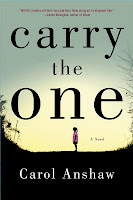It’s an old story: star-crossed lovers from different worlds
meet, love, part, perish. When Shakespeare penned it, he pitted the Capulets
against the Montagues. When Erich Segal did it (did you get dizzy from that
sudden change in cultural altitude?) in Love Story, he teamed fancy-pants-rich boy Oliver
Barett IV with other-side-of-the-tracks Jenny Cavilleri (a vowel on the end of
her name! heavens!). And, of course, there are those Jets and Sharks
pirouetting around Tony and Maria from when Leonard Bernstein and Stephen
Sondheim did it.
I’m talking about the old story of star-crossed lovers, of
course, and book number 19 spotlights two of them: Ali and Nino, by Kurban Said.
I had read a book about the author of Ali and Nino. The Orientalist, by Tom Reiss, claims that Kurban
Said was born Lev Nussinbaum, a Jew from
oil-rich Baku, capital of Azerbijain. Reiss's research revealed that Nussinbaum converted to Islam and wrote under
the name Essad Bey and, later, Kurban Said. But the introduction to my 1999 edition of Ali and Nino begins,
“This remarkable book has a strange and cloudy history…” and claims the book
was co-authored by two people—Bey and the Austrian Baroness Elfriede Ehrenfels. After all his work, Reiss may take exception to the description of the book's history as “strange and cloudy”; I, on the other hand, take exception to the
adjective, “remarkable.”
Set mostly in Baku, capital of Azerbaijan, during the years of World War I and the
Russian Revolution, the book tells the story of a wealthy Muslim boy, Ali, who
falls in love with a Christian Georgian princess, Nino. But it’s really the
story of contradiction and attempted reconciliation between old world and new, Islam and
Christianity, male and female, and, ultimately East and West.
 |
| A mixed marriage in 1900 Baku |
Ali is dark, Nino is blonde. Ali’s world is one of blood
bonds and eunuchs, devishes and harems; Nino’s one of opera houses and Paris
fashions. On the even of their marriage, Ali’s father advises him: “Do not beat
her when she is pregnant.” Nino’s father tells him: “Man and wife must never forget that they have equal rights and that
their souls are their own.”
The conflict between East and West seems relevant today, nearly a century after its time. At one
point, Ali flees to the mountains of Dagestan, a land I had never heard of up
until the recent coverage of the lives of the Boston Marathon bombers. At one
point in the story, Ali and Nino argue about whether or not she will wear a
veil after they are wed. The features of a woman, Ali informs her, should only please her
husband: “An open face, a naked back, a bosom half uncovered, transparent
stockings on slender legs—all these are promises which a woman must keep. A man
who sees as much as that wants to see more. To save the man from such desires,
that is why women wear the veil.”
It’s all our fault ladies. We’ve just got to protect those
guys from their own beastly urges. I’m unwrapping my burqa as I write.
But despite some interesting moments, the book as a whole left
me—well, maybe not cold, but lukewarm. The melodramatic
violins-and-handkerchiefs style did not jerk my tears, it tried my
patience. In the end, Ali and Nino felt more like different sides of an old
argument rather than flesh-and-blood lovers whose passion tries to overcome a
great divide. I’ll stick with Healthcliff and Cathy.











